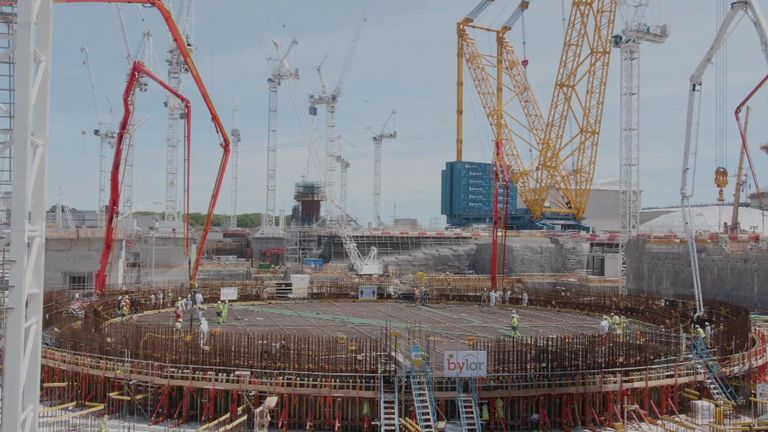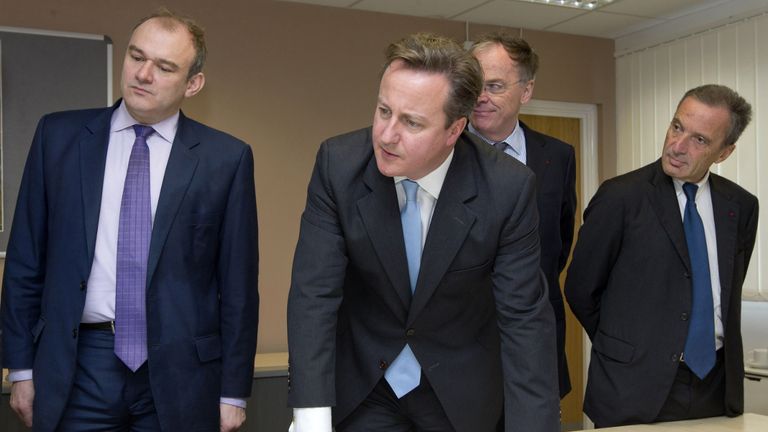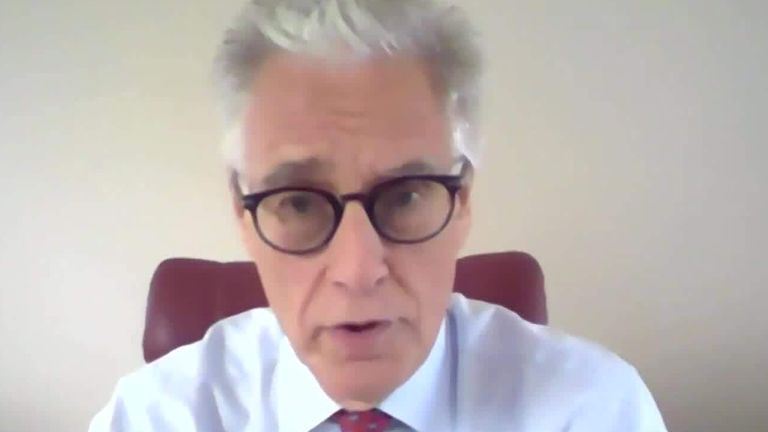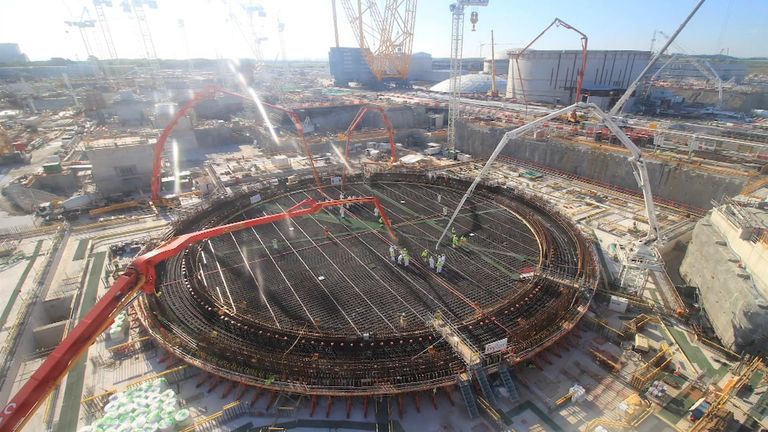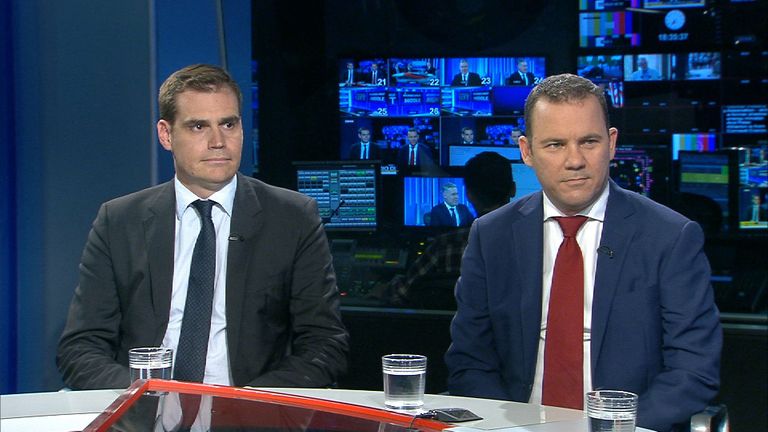This is a critical time for the UK’s nuclear energy industry.
The construction of the UK’s first new nuclear power station for a generation, Hinkley Point C in Somerset, is well advanced and EDF Energy, the French-owned energy giant building the plant, is keen to pick up the pace on its next big infrastructure project.
Sizewell C, in Suffolk, is envisaged as a replica project to Hinkley Point C.
EDF Energy says that the two, once operational, will provide low carbon electricity to meet 14% of UK demand and power around 12 million homes.
But the future of new nuclear build in the UK has again been thrown into doubt by last week’s decision by Hitachi, the Japanese company, to abandon the Horizon project – which would have seen new nuclear power stations built at Wylfa Newydd on Anglesey and at Oldbury on Severn in south Gloucestershire.
Meanwhile, a cash-strapped government is unlikely to want to provide the financial support that its predecessors have given Hinkley Point C, under which EDF Energy was guaranteed a minimum price of £92.50 per megawatt hour (MWh), inflation-linked, for 35 years.
Under the contract, signed by David Cameron’s government, the government pays the difference between the wholesale energy price and the price it has guaranteed EDF Energy.
The current wholesale electricity price is around £43 per MWh.
It was the cost of this guarantee which has made ministers wary of funding new nuclear build in the same way as Hinkley Point C and, ultimately, is why Hitachi decided to walk away.
The National Infrastructure Commission has urged the UK to spend more on power generation from renewable energy – the cost of which has plunged.
But Simone Rossi, chief executive of EDF Energy, insisted today that it was still crucial to press ahead with the construction of Sizewell C.
Speaking to Sky News from Hinkley Point, Mr Rossi said that the falling cost of renewables was “great news” but said it was important nuclear remained part of the energy mix, because it provided an unbroken supply of energy for times when the sun does not shine and the wind does not blow.
He added: “You don’t want to have all your eggs in the same basket.”
Mr Rossi said that Sizewell C would be cheaper to finance than Hinkley Point C and, because it was already designed and would benefit from the experience and the supply chain that had been established to build Hinkley Point C, would be cheaper to build.
He went on: “We cannot miss this opportunity because Sizewell C can create another 25,000 jobs in construction, engineering, manufacturing.”
The unions are enthusiastic about the project and, in particular, the skills for life with which it would equip young workers in East Anglia.
EDF Energy last week raised the number of apprentices it is aiming to employ at the plant from 1,000 to 1,500.
The big question is how Sizewell C is financed.
It is hard to see how it happens without some form of government support and ministers are expected to set out a financing framework in the Energy White Paper due to be published before the end of the year.
Mr Rossi said the “really disappointing” cancellation of Horizon “underlines the importance for government to put in place an investable framework for new nuclear”.
He is campaigning hard on the jobs that would be created should Sizewell C get the go-ahead and how the project fits into Boris Johnson’s ‘levelling up’ agenda to support less prosperous regions across the UK.
As an example, Mr Rossi pointed out that much of the steel being used in Hinkley Point C has been sourced from Wales, whose steel industry is fighting for its life.
He said that, in addition, one in five of the workers employed at Hinkley Point C were Welsh.
The company’s figures suggest the construction of Hinkley Point C has seen £1.7bn spent with more than 1,100 companies across the West Country, while spending on contracts with businesses across the Midlands and the North of England had hit almost £1.1bn, taking in around 2,500 companies across the supply chain.
Another question raised over Sizewell C is the involvement of CGN, the Chinese state-owned nuclear energy company, particularly given the recent controversy surrounding Huawei’s involvement in the building of the UK’s 5G mobile network.
CGN owns 20% of the project and, as such, is committed to making a big financial contribution to a project expected to cost £18bn.
Mr Rossi said CGN was already making a valuable contribution to the success of Hinkley Point C and was committed to participating in the development of Sizewell C.
He added: “When it comes to the final investment decision, it will be up to the government to determine how they want to move forward with which kind of investors – and we are ready to work with the government to implement that.”
Some may also be sceptical about the time taken to build these enormous pieces of infrastructure.
Hinkley Point C was originally due to be up and running by the end of 2017 but after numerous delays – and a sharp increase in the predicted cost of completing the plant – the target is now 2025.
There has also been a row with National Grid about the cost of connecting the new reactor to the UK’s power network.
Asked whether Hinkley Point C would be operational by 2025, Mr Rossi replied: “That is our target, but we need to be humble.
“These are massive projects and this year was particularly challenging with the coronavirus crisis.
“When lockdown hit, we had to slow down activity, we put the health of our employees and the communities around the site first.
“We had to make the site safe.
“It is now safe, so we are delivering our milestones and are happy about where we are, but we need to remain prudent about the future.”
It will be a tricky decision for the government.
:: Subscribe to the Daily podcast on Apple Podcasts, Google Podcasts, Spotify, Spreaker
On the one hand, nuclear represents a great opportunity to accelerate the UK’s move to zero carbon, as well as creating well-paid jobs and skills for the future.
On the other, ministers may well be wary of CGN’s involvement, while above all they will be wanting to involve saddling taxpayers with a heavy bill along the lines of Hinkley Point C.
So – a critical time for the UK’s nuclear energy industry.
Although, in fairness, that could have been said at any point during the last couple of decades.

